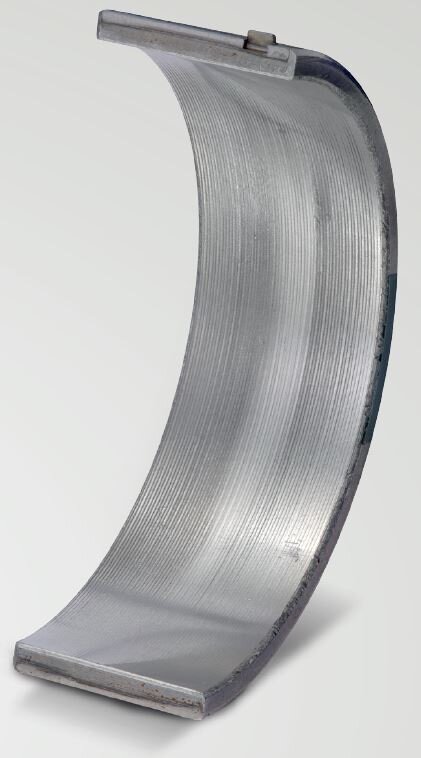Adaptive run-in wear
DESCRIPTION OF THE DAMAGE
- Bright, smooth wear marks in the main load area
- Marks which gradually start and taper off
- Machining structure of the bearing is still recognisable

In the centre of the bearing, a bright stripe of wear can be seen. In the area of the relief and the edges of the bearing, no traces of operation are visible, however. Here, the machining structure of the bearing can still be recognised.
DAMAGE ASSESSMENT
During the initial hours of operation of a bearing, the roughness peaks are smoothed and the roughness profile levelled through the contact between the bearing and shaft journal during mixed friction operation. The wear mainly appears in the main load area of the bearing or in areas of macroscopic form deviations
The adaptive run-in wear is desired and therefore does not represent damage to the bearing.
The adaptive run-in wear is desired and therefore does not represent damage to the bearing.
 |
NOTE The function of the bearing is not impaired. If, however, the adaptive run-in wear intensifies (for example due to a sustained error in alignment and form), initial rubbing marks, seizure or fatigue damage may be the result. |